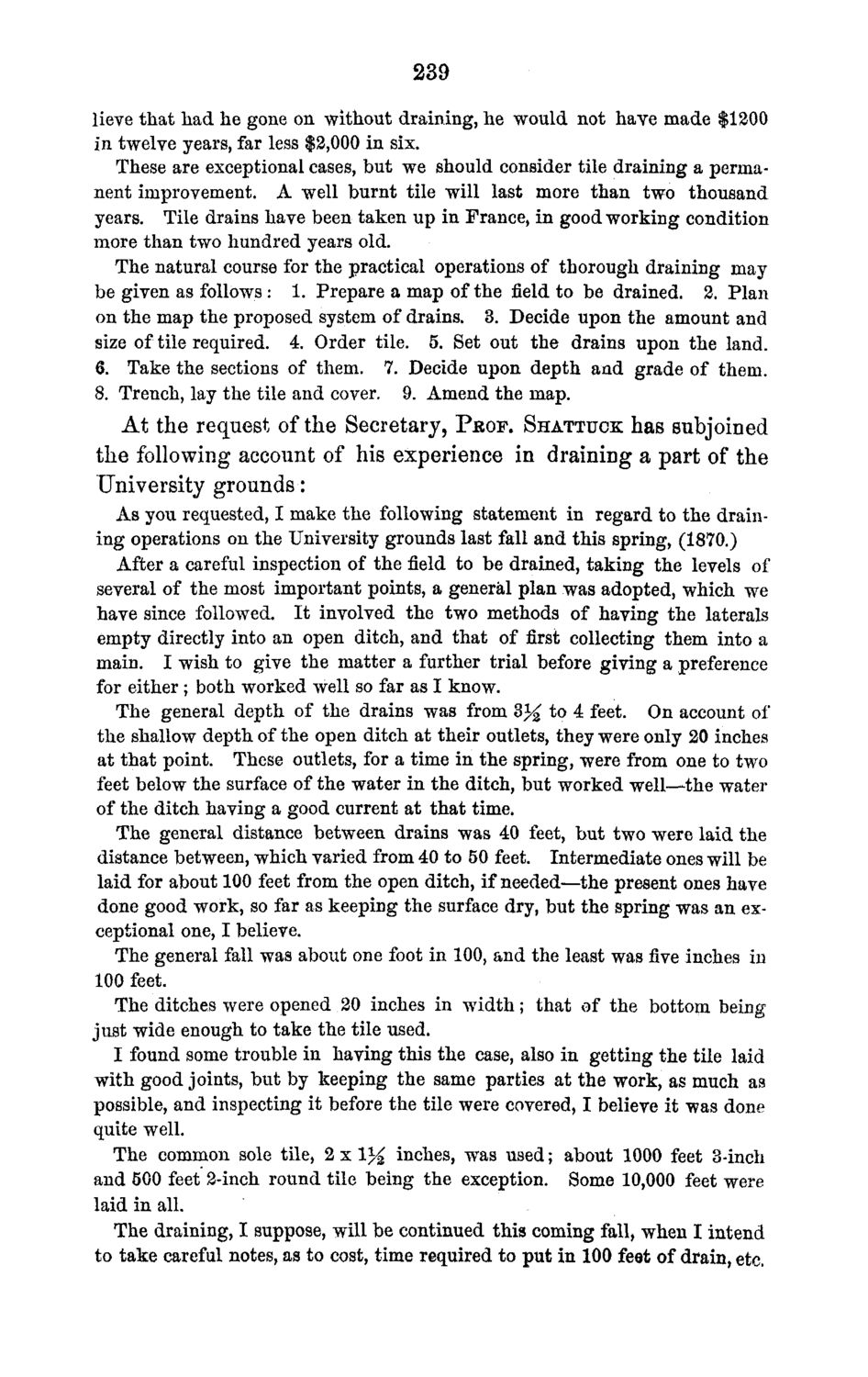| |
| |
Caption: Board of Trustees Minutes - 1870
This is a reduced-resolution page image for fast online browsing.

EXTRACTED TEXT FROM PAGE:
239 lieve that had he gone on without draining, he would not have made $1200 in twelve years, far less $2,000 in six. These are exceptional cases, but we should consider tile draining a permanent improvement. A well burnt tile will last more than two thousand years. Tile drains have been taken up in France, in good working condition more than two hundred years old. The natural course for the practical operations of thorough draining may be given as follows: 1. Prepare a map of the field to be drained. 2. Plan on the map the proposed system of drains. 3. Decide upon the amount and size of tile required. 4. Order tile. 5. Set out the drains upon the land. 6. Take the sections of them. 7. Decide upon depth and grade of them. 8. Trench, lay the tile and cover. 9. Amend the map. At the request of the Secretary, PJBOF. SHATTUCK has subjoined the following account of his experience in draining a part of the University grounds: As you requested, I make the following statement in regard to the draining operations on the University grounds last fall and this spring, (1870.) After a careful inspection of the field to be drained, taking the levels of several of the most important points, a general plan was adopted, which we have since followed. It involved the two methods of having the laterals empty directly into an open ditch, and that of first collecting them into a main. I wish to give the matter a further trial before giving a preference for either; both worked well so far as I know. The general depth of the drains was from 3J£ to 4 feet. On account of the shallow depth of the open ditch at their outlets, they were only 20 inches at that point. These outlets, for a time in the spring, were from one to two feet below the surface of the water in the ditch, but worked well—the water of the ditch having a good current at that time. The general distance between drains was 40 feet, but two were laid the distance between, which varied from 40 to 50 feet. Intermediate ones will be laid for about 100 feet from the open ditch, if needed—the present ones have done good work, so far as keeping the surface dry, but the spring was an exceptional one, I believe. The general fall was about one foot in 100, and the least was five inches in 100 feet. The ditches were opened 20 inches in width; that of the bottom being just wide enough to take the tile used. I found some trouble in having this the case, also in getting the tile laid with good joints, but by keeping the same parties at the work, as much as possible, and inspecting it before the tile were covered, I believe it was done quite well. The common sole tile, 2 x 1 % inches, wTas used; about 1000 feet 3-inch and 500 feet 2-inch round tile being the exception. Some 10,000 feet were laid in all. The draining, I suppose, will be continued this coming fall, when I intend to take careful notes, as to cost, time required to put in 100 feet of drain, etc.
| |